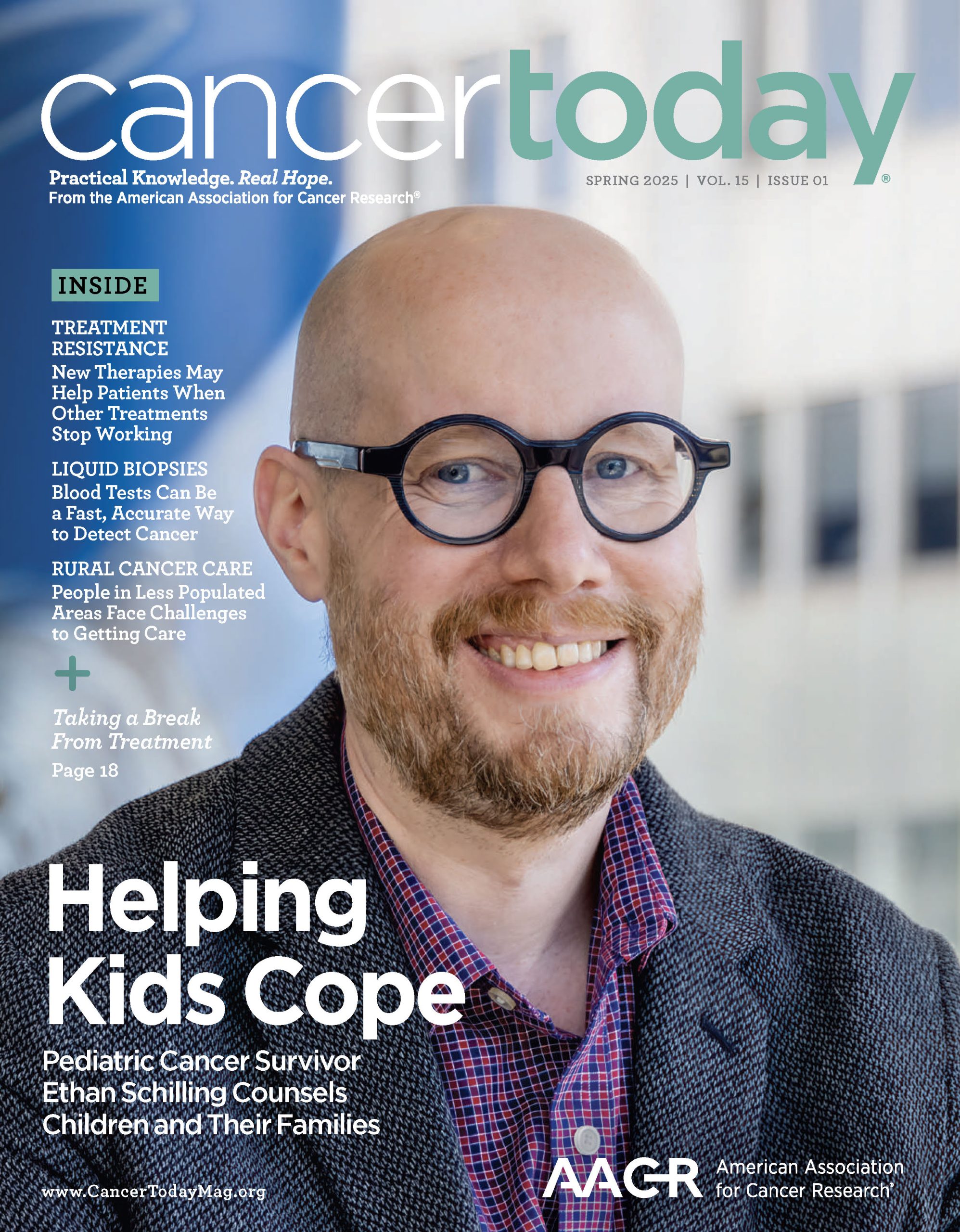Every week, the editors of Cancer Today magazine bring you the top news for cancer patients from around the internet. Stay up to date with the latest in cancer research and care by subscribing to our e-newsletter.
Discussion About Treatment Goals Often Delayed for Young Adults With Advanced Cancer
Most adolescents and young adults (AYAs) with advanced cancer do not have discussions with health care providers about their goals for cancer treatment until the final month of life, according to a National Cancer Institute (NCI)-funded study published last year in JAMA Network Open. Goals-of-care discussions provide AYAs, and anyone with cancer, an opportunity to consider how treatment aligns with their values, including how aggressively they will pursue treatment at the end of life. Researchers analyzed medical records from nearly 2,000 people between 12 and 39 who died from cancer. The study found that only 7% of AYAs had documented discussions about palliative care preferences more than two months before death, compared with 58% in the final month of life. Patients in the study who had early conversations about goals of care had fewer emergency department visits and were less likely to spend time in intensive care during the last month of their life. “When a young person is faced with a disease that may lead to an early death, it’s vitally important to give them the opportunity to think about what’s most important to them,” Ashley Wilder Smith of the NCI’s Healthcare Delivery Research Program and its Young Adult Oncology Working Group, said in a post on the NCI’s Cancer Currents blog.
One in Six Patients in Phase II Cancer Trials Receive Therapies Eventually Approved by the FDA
In an effort to provide patients objective data about the potential benefit of clinical trial participation, Jonathan Kimmelman, a biomedical ethicist and researcher at McGill University in Montreal, has studied the rate at which drugs tested in clinical trials are eventually approved by the Food and Drug Administration (FDA). An FDA approval signifies the drug has been proven safe and effective and has progressed from smaller early phase I studies through larger phase III trials that compare the experimental treatment to the standard of care. In a recent study, Kimmelman and colleagues looked at phase II clinical trials and found that 1 in 6 participants received a treatment that was eventually approved by the FDA. The study, published Feb. 25, 2025, in the Journal of the National Cancer Institute, analyzed 400 phase II oncology trials started between 2012 and 2015 encompassing over 25,000 patients—most of whom had metastatic disease or blood cancer. In previously published research, Kimmelman and colleagues found only 1.2% of patients who participate in phase I cancer clinical trials receive a drug that was eventually approved. The leap to 16% in the 2025 study shows that phase I trials do help to filter out unsafe and ineffective drugs, Kimmelman told Healio, but ultimately the probability of receiving a drug that will go on to be approved is still low—and the motivation for joining clinical trials will vary for each patient. “I’ve always had the view that the best reason to participate in clinical trials is to create treatment opportunities for future patients,” he said. “What this paper suggests is there’s a 5-in-6 chance you’re going to get a drug that’s not [ultimately] approved. Some patients may think that those 1-in-6 odds of getting a drug that’s approved are still favorable enough to want to go into a phase II study. I’m not going to tell those patients how to think. Our task is to give patients all the information we can and to support them in making a good decision.”
Researchers Urge More Judicious Use of CT Scans
Radiation emitted from CT scans could account for 5% of all future cancers diagnosed in the U.S., a study published April 14 in JAMA Internal Medicine suggests. The study used a risk model based on CT-use data from hospitals in 20 U.S. states along with an estimate of CT use in 2023. Researchers estimated that 103,000 future cancer diagnoses will result from CT scans conducted in 2023—largely because of CT scans that were ordered despite being low-value and potentially unnecessary. “Medical imaging has potential benefits. It has potential harms as well, and it’s really important to balance them,” lead author and radiologist Rebecca Smith-Bindman, an epidemiologist at the USCF Helen Diller Family Comprehensive Cancer Center in San Francisco, told NPR. Smith-Bindman also noted radiation levels can vary between facilities for the same types of scans. An editorial published in the same issue stressed efforts to balance the risk of cancer with the life-saving benefits of CT scans. Smith-Bindman sees patients as being a part of those balancing efforts—as use of CT imaging continues to rise. “We need patients to ask their doctors, ‘Can you use low-dose when you scan me?’” Smith-Bindman said. “It’s crazy that patients have to ask for it, but it’s actually really successful.”
Cancer Today magazine is free to cancer patients, survivors and caregivers who live in the U.S. Subscribe here to receive four issues per year.





